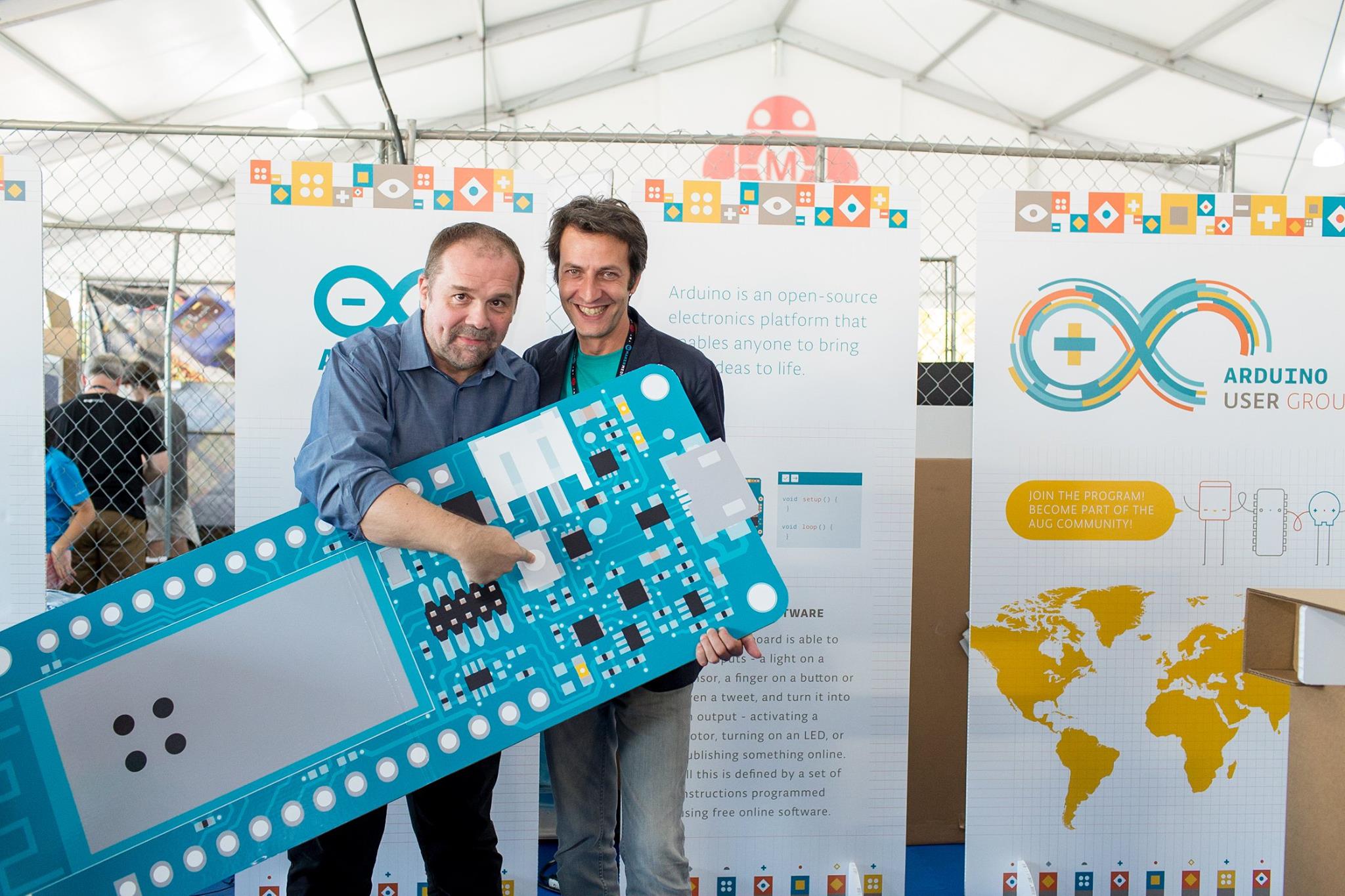Who owns Arduino? We don’t mean metaphorically — we’d say that’s the community of users and developers who’ve all contributed to this amazing hardware/software ecosystem. We mean literally. Whose chips are on the table? Whose money talks? It looks like it could be ARM!
The Arduino vs Arduino saga “ended” just under a year ago with an out-of-court settlement that created a private holding company part-owned by both parties in the prior dispute over the trademark. And then, [Banzi] and the original founders bought out [Musto]’s shares and took over. That much is known fact.
The murky thing about privately held companies and out-of-court settlements is that all of the details remain private, so we can only guess from outside. We can speculate, however, that buying out half of the Arduino AG wasn’t cheap, and that even pooling all of their resources together, the original founders just didn’t have the scratch to buy [Musto] out. Or as the Arduino website puts it, “In order to make [t]his a reality, we needed a partner that would provide us with the resources to regain full ownership of Arduino as a company… and Arm graciously agreed to support us to complete the operation.” That, and the rest of the Arduino blog post, sure looks like ARM provided some funds to buy back Arduino.
We reached out to [Massimo Banzi] for clarification and he replied:
“Hi arm did not buy nor invest in arduino. The founders + Fabio Violante still own the company. As I wrote in the blog post we are still independent, open source and cross platform.”
We frankly can’t make sense of these conflicting statements, at least regarding whether ARM did or didn’t contribute monetary resources to the deal. ARM has no press release on the deal as we write this.
Announcing a partnership without details isn’t a new activity for Arduino. Recently we wrote about open questions on the Arduino Foundation. [Banzi] was willing to speak with Hackaday at length about that topic, suggesting more details were just weeks away but we have yet to see follow-through on that.
What we can tell is that [Banzi] and Arduino want us to know that they’re still independent. The Arduino post mentions independence and autonomy eight times in a 428-word post. (The lady doth protest too much?) They’re very concerned that we don’t think that they’ve been snapped up by ARM.
And there’s also good reason to believe that Arduino will remain autonomous even if ARM owns a big stake. ARM sells its intellectual property to a number of silicon manufacturers, who then compete fiercely by offering different peripheral sets and power budgets, and they’re very serious about providing them all with a level playing field.
Anyway, the various ARM chips are nice to work with from a hacker perspective. If the AVR-based UNO was the last non-ARM Arduino board ever made, we’d only shed a tiny little tear. On the other hand, if you’re an MSP430 or PIC fanboy or fangirl, we wouldn’t be holding your breath for a light-blue board sporting your favorite silicon but that is just conjecture.
So we have seemingly conflicting information on the details of this deal, but also promises of openness and transparency. On one hand we’re pleased that ARM is the apparent silent partner, but on the other hand we’re left confused and wanting more. Who owns Arduino?
Filed under:
Arduino Hacks,
Business,
Current Events,
Featured,
news 







